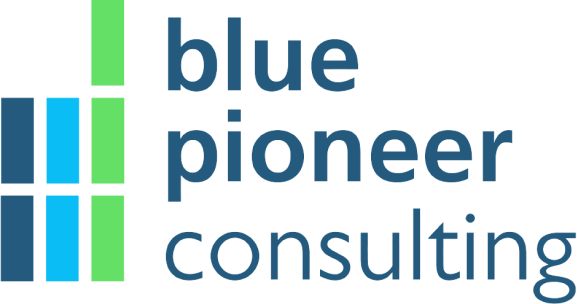Service Desk
A central support unit that resolves IT questions and issues, providing the first point of contact for users facing technical problems, enhancing operational reliability and reducing downtime.
Technical Project Management
The management of technology projects to ensure they are completed within time, budget, and specification constraints, coordinating planning, execution, and closure while aligning with business goals.
Access Point
A device that allows wireless devices to connect to a wired network.
Active Directory (AD)
A tool that helps manage and organize all the users, computers and other devices in a company’s network. It makes sure that only the right people have access to the right information and resources, and it helps keep everything secure.
Professional Services
Expert support and consulting to optimize and enhance organizational technology systems through services like system implementation and technical support. Examples might include Wi-Fi implementations and upgrades, phone system implementations, cabling, infrastructure, and network design, build out and replacement.
Managed Network
Comprehensive management of a company's network infrastructure including monitoring, maintenance, and operation, focusing on performance and security. Consisting of firewalls, routers, switches, and wireless access points.
Managed Infrastructure
A service that maintains, monitors, and manages a company's on-site or co-located datacenter related IT hardware and some software systems to ensure efficient and secure operations, focusing on strategic growth. Consisting of servers, storage, power, etc.
Managed Device
Maintenance, monitoring, and management of business devices like computers, tablets, and mobile phones, ensuring they are secure, updated, and operating efficiently.
Licensing
Management and oversight of a company's software licenses to ensure compliance, manage renewals, and optimize configurations cost-effectively.
Hardware
Management of a company's hardware lifecycle including procurement, configuration, maintenance, and disposal, ensuring optimal operation and reduced risks.
Managed Cloud
Management of a company’s cloud resources on Microsoft Azure, covering setup, maintenance, and optimization to ensure security, cost efficiency, and strategic alignment.
Internet Circuits
Management of a company's internet connectivity, including setup, maintenance, and optimization of internet circuits to ensure reliable and tailored internet performance. Often consisting of a primary reliable fiber connection, and a secondary low-cost backup coax connection.
Telecom
Comprehensive management of a company’s telephony systems, from installation to upgrades, ensuring reliable and integrated communication solutions.
IT Assessment
A detailed evaluation of a company's IT setup to identify strengths, vulnerabilities, and improvement opportunities, aimed at optimizing technology use and security.
Border Gateway Protocol (BGP)
A routing protocol used in computer networks to exchange routing information between different networks on the internet.
Code Obfuscation
Refers to the practice of deliberately making software code difficult to understand or reverse engineer. This can help to protect proprietary code or intellectual property, as well as prevent malicious actors from exploiting vulnerabilities in the code.
Dynamic routing
The process of automatically determining the best path for network traffic based on realtime information about the network topology.
Enhanced Interior Gateway Routing Protocol (EIGRP)
A routing protocol used in computer networks to dynamically determine the best path for network traffic.
Encryption
The process of converting information or data into a code or language that only authorized individuals or systems can understand. This helps to protect sensitive data, such as patient health information, from being accessed or intercepted by unauthorized parties.
End of Life (EOL) Refers to a product that has reached the end of its useful life, from a manufacturer’s perspective. Indicates the manufacturer has stopped marketing, selling, providing parts, services, or updates for the product. End of Support (EOS)/End of Service Refers to software no longer receiving manufacturer functional updates and security updates. Endpoint A device or software application that connects to a network, such as a computer, smartphone, or printer. Endpoint Detection and Response (EDR) A security technology that detects and responds to security threats on endpoints, such as computers and servers. Endpoint Protection (EPP)/End Point Security The ability to protect the assets (computers, tablets, etc.) that are the last touch point of the network an asset is connected to. External Vulnerability Scan A process of identifying potential weaknesses in a network or system that could be exploited by an attacker from outside the organization. Network Access Control (NAC) A security technology that enforces policies to control access to a network by devices and users. Opportunity CostRefers to the potential benefits that are lost when choosing one option over another. In this sense, this term includes damages that may occur in IT if investment is not made.
Open Shortest Path First (OSPF) A routing protocol used in computer networks to determine the best path for network traffic based on metrics such as bandwidth and delay. Social Engineering A technique used by cybercriminals to manipulate or deceive individuals into divulging sensitive information or performing actions that are not in their best interest. Examples of social engineering tactics include phishing emails, fake websites, text and phone call scams. Software-defined wide area network (SD-WAN) A technology that allows for the management and configuration of WAN connections using software-based controllers. Spanning-tree protocol (STP) A protocol used in computer networks to prevent loops in a network topology. Static routes Predetermined paths that network traffic takes to reach a destination on a network. Subnet A portion of a larger network that has been divided for organizational or security purposes. Supported End Device(s) An endpoint that has not yet reached the manufacturer’s End of Life (EOL) or End of Support (EOS) date and is still under manufacturer support. Virtual Private LAN Service (VPLS) A technology that allows multiple sites to communicate with each other over a shared network infrastructure as if they were on the same Local Area Network (LAN). VMware A virtualization and cloud computing software. Allows for the virtualization of servers and/or computers (virtual machines) and can utilize multiple operating systems simultaneously.